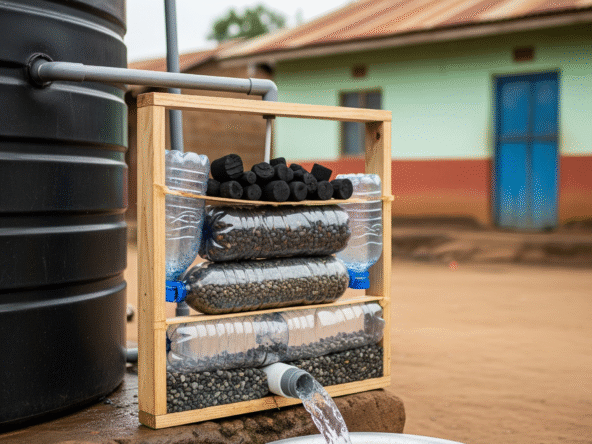In many Kenyan households, farms, and construction projects, water pumps serve as the central unit of water supply powering irrigation, borehole distribution, and pressure systems. Despite their importance, these pumps are often left exposed to harsh weather, dust, animals, or theft, resulting in breakdowns or reduced lifespan.
This guide explains how to build practical, affordable pump shelters in Kenya. It includes recommended materials, design tips, and integration with other utility systems for full protection and efficiency.
1. Why Protect Your Water Pump?
Whether your system runs on solar, petrol, or electricity, proper pump housing ensures it operates safely and efficiently. Key benefits include:
- Protection from rainfall and seasonal flooding
- Prevention of dust buildup and physical damage
- Theft deterrence, especially in unsecured compounds
- Reduced wear from UV exposure and rust
- Extended service life and lower maintenance costs
For setups that rely on solar pumping units, protection is especially important. See Solar-Powered Water Pumps for Rural Tanks for more.
2. Best Materials for Building Pump Shelters
Depending on your budget, terrain, and exposure level, here are viable options:
| Material | Advantages | Ideal Use Cases |
|---|---|---|
| Concrete blocks | Long-lasting and water-resistant | Permanent borehole or electric pump setups |
| Timber panels | Low-cost and easy to install | Farms and rural sites |
| Steel cage with roofing | Tamper-proof and well-ventilated | Urban homes or high-theft risk zones |
| Plastic sheds | Lightweight and portable | Temporary projects and mobile setups |
In areas with flooding risk, build on elevated foundations. For more tips, see Flood-Proof Water Storage in Kenya.
3. DIY Design Tips for Pump Housing
A good pump shelter should balance security, airflow, and maintenance access. Include the following in your design:
- Raised floor slab (minimum 10 cm above ground)
- Vented walls to avoid heat build-up
- Lockable door or secure padlock system
- Rain-resistant roofing (corrugated iron or PVC)
- Sound insulation for petrol-powered units (optional)
You can also integrate your pump structure with Tank Shelters and Lockable Enclosures for a complete and neat utility setup.
4. Mistakes to Avoid When Building a Pump Shelter
Avoid the following design and construction errors:
- Placing the pump directly on soil, which causes vibration and rust
- Blocking ventilation, which leads to overheating
- Using flammable materials around fuel-driven pumps
- Omitting access doors, which complicates maintenance or emergency shutoff
For systems that rely on multiple tanks, incorporate provisions for pipe exits and automation. See Tank Refill Automation Using Float Switches for guidance on smart refill solutions.
5. Mobile Pump Shelter Options for Farms
If your pump is part of a mobile irrigation system, consider a custom pump cart setup:
- Steel frame with wheels
- Lockable cage for the pump and fuel tank
- Hose management hooks or holders
- Anti-vibration mount for stable operation
These setups work especially well for farms using Mobile Water Trailer Setups or shifting between multiple fields.
Pump protection shelters are not just optional add-ons—they are essential for ensuring water reliability and equipment durability. Whether your setup is for a household booster pump or a petrol-powered irrigation pump, building a strong, secure, and weather-resistant shelter is a wise investment.


